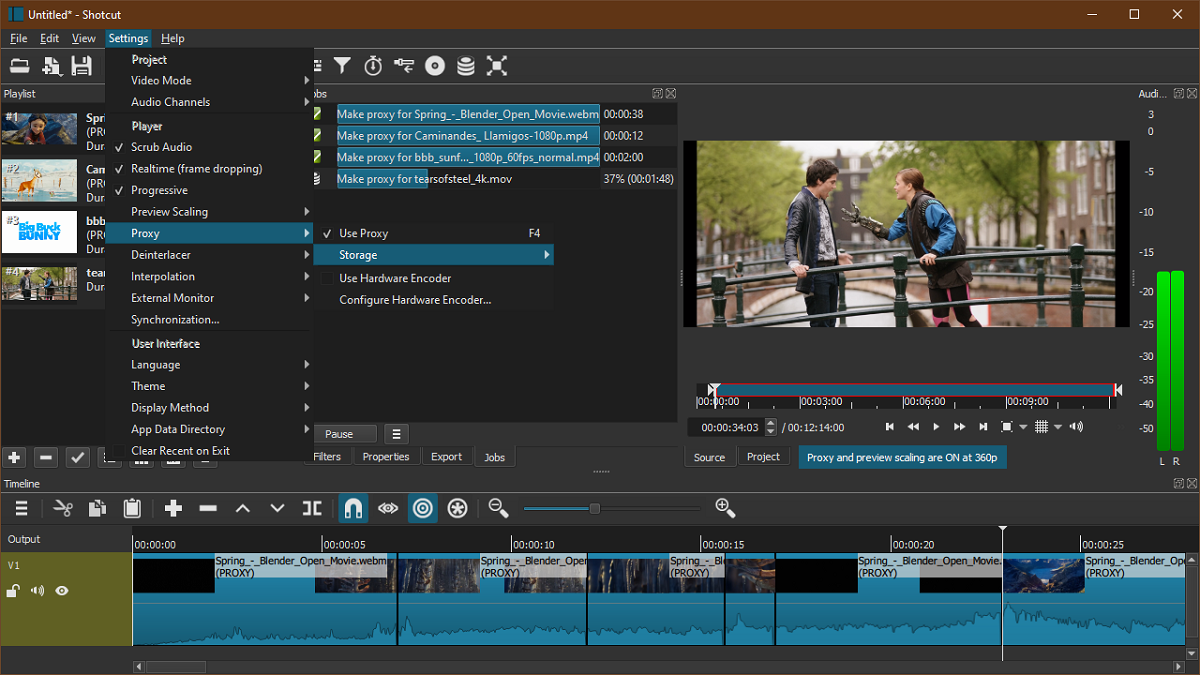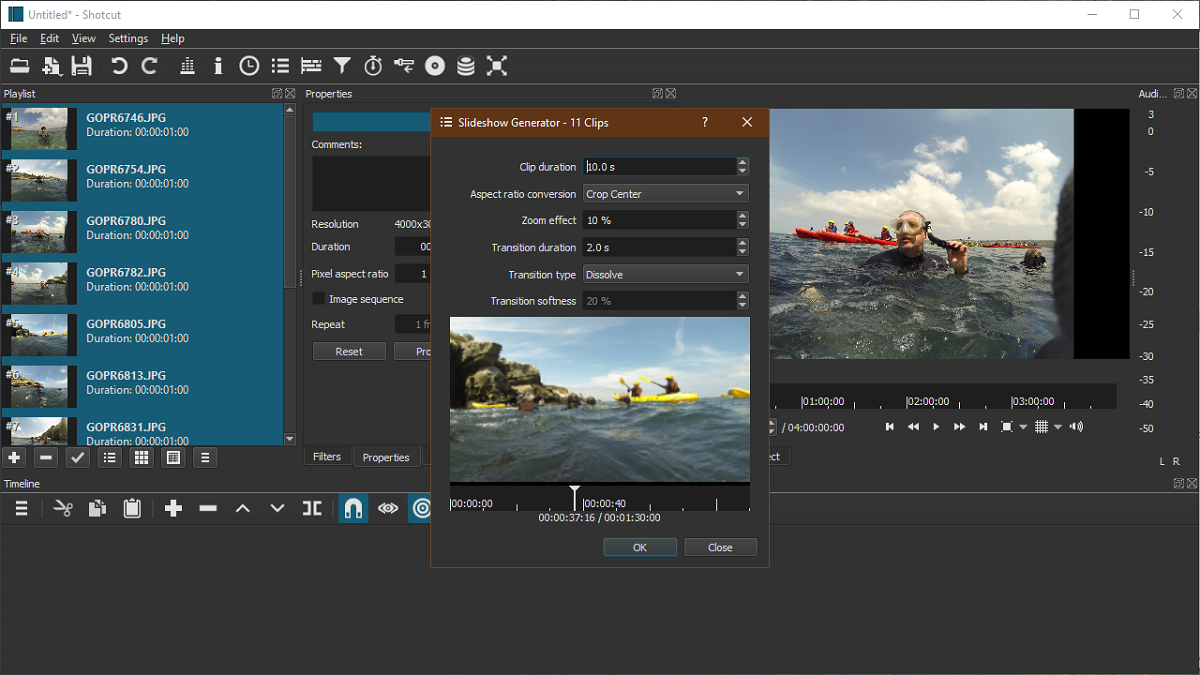
Few days ago the new version of the popular video editor Shotcut 20.06 was released, which is a project developed by the author of the MLT project and uses this framework to organize video editing.
Support for video and audio formats it is implemented through FFmpeg. You can use plugins with the implementation of video and audio effects compatible with Frei0r and LADSPA. Among the features of Shotcut, it is possible to note the possibility of multitrack editing with the composition of video from fragments in various source formats, without the need for their import or preliminary transcoding.
There are built-in tools to create screencasts, process images from a webcam and receive video in real time. To build the interface, Qt5 is used. Code written in C ++ and distributed under the GPLv3 license.
What's new in Shotcut 20.06/XNUMX?
In this new edition of the editor, one of the main novelties that stands out is the inclusion of a slideshow generator which we can find in Playlist> menu> Add selected to the slide show.
For video and images in this new edition of Shotcut 20.06 a proxy editing mode is implemented (Settings> Proxy), which allows you to create and use low resolution video and images instead of the original file options. The user can make edits based on images in low resolution, minimally loading the system and when the result is ready to export the job in normal resolution.
Another change that stands out is that added a set of filters for spatial video in 360 degree mode, the new filters added are:
- 360: Equirectangular Mask
- 360: Equirectangular to Rectilinear
- 360: Hemispherical to Equirectangular
- 360: Rectilinear to Equirectangular
- 360: Stabilize
- 360: Transform
In addition, the configuration for synchronization calibration during playback was added, this configuration can be found in Configuration> Synchronization.
On the other hand, a button was also added to add a keyframe to the Keyframes panel for all parameters (previously this button was shown selectively).
Of the other changes that stand out from this new version:
- Blip Flash Generator (Open Another> Blip Flash) added.
- Added export presets: Slide Deck (H.264) and Slide Deck (HEVC).
- A parameter to determine the background color has been added to the rotation, scaling and positioning filters.
- Added the ability to move files from an external file manager to the timeline in drag and drop mode.
- Added option to merge with next clip in clip context menu.
- Wavelet filter added to suppress noise from video.
- To comply with political correctness, "Master" on the timeline was renamed to Salida.
Finally if you want to know more about it about this new version, you can check the details in the following link.
How to install Shotcut on Ubuntu and derivatives?
The first method in order to get this video editor on the system (only valid up to Ubuntu 18.04 lts), is adding the application repository to our system. For it We must open a terminal with Ctrl + Alt + T and in it we are going to execute the following.
First we are going to add the repository with:
sudo add-apt-repository ppa:haraldhv/shotcut
Then we update the list of packages and repositories with this command:
sudo apt-get update
Finally we proceed to install the application with:
sudo apt-get install shotcut
And voila with it, it will have been installed in the system.
Other method we have to obtain this editor, is by downloading the application in its AppImage format, which gives us the facility to use this application without installing or adding things to the system.
For this just open a terminal with Ctrl + Alt + T and in it execute the following command:
wget https://github.com/mltframework/shotcut/releases/download/v20.06.28/Shotcut-200628.glibc2.14-x86_64.AppImage -O shotcut.appimage
Done this now we must give execution permissions to the downloaded file with:
sudo chmod +x shotcut.appimage
And finally we can run the application with the following command:
./shotcut.appimage

They missed putting the Snap method to install ... I already remembered that they hate Snap XD
For the record, it is on the official website: snap install shotcut –classic
And also by flatpak: flatpak install flathub org.shotcut.Shotcut
Shotcut in Snap format works great!
You just have to type in the terminal "sudo snap install shotcut –classic".
And in this way one avoids installing unnecessary repositories.
All programs should be appimage, it is the best and simplest that I have used.
I agree